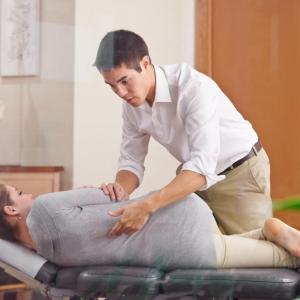Investigate revealed right now by a workforce of researchers led by UC San Diego researchers located that wellbeing care amenities in underrepresented, rural and really hard-strike communities have been a lot less probably to administer COVID-19 vaccines for the duration of their preliminary rollout, partly due to not acquiring plenty of doses to fulfill demand.
In a study posted Thursday in PLOS Drugs, Inmaculada Hernandez, associate professor of medical pharmacy at Skaggs School of Pharmacy and Pharmaceutical Sciences at UCSD, quantified the disparities in the early distribution of COVID-19 vaccines to wellbeing care amenities across the country.
“Equally the national plan and public view agreed that vaccine distribution ought to prioritize deprived communities and those strike toughest by COVID-19, but the facts displays that is not what happened,” Hernandez stated.
In accordance to the scientists, preceding scientific tests of vaccine accessibility had not distinguished no matter whether lower access in underserved neighborhoods was a item of the lessen focus of wellness treatment amenities in these parts or of inequities in the distribution of COVID-19 vaccines to just about every health care facility.
To respond to that problem, Hernandez and colleagues at UCSD, College of Florida and University of Pittsburgh examined no matter whether the chance of an eligible wellbeing treatment facility administering COVID-19 vaccines different centered on the racial/ethnic composition of counties and how rural or urban the county is.
The crew targeted on the preliminary period of vaccine rollout, applying details from Could 2021 when states ended up formally demanded to make vaccines available to the general public.
At that time, 61% of suitable overall health treatment services and 76% of suitable pharmacies throughout the U.S. presented COVID-19 vaccinations. When the researchers commenced comparing these fees with the socioeconomic features of the county every facility was located in, numerous patterns emerged.
Facilities in counties with a substantial proportion of Black persons were significantly less possible to serve as COVID-19 vaccine administration places in contrast to amenities in counties with a low proportion of Black persons. This was especially the circumstance in metropolitan places, where by services in urban counties with significant Black populations had 32% lower odds of administering vaccines as opposed to facilities in city counties with small Black populations.
The researchers also found services in rural counties and in counties most difficult strike by COVID-19 ended up also related with lessened odds of serving as a COVID-19 vaccine administration site. In rural counties with a higher proportion of Hispanic people, services had 26% decrease odds of administering vaccines as opposed to facilities in rural counties with a minimal proportion of Hispanic people.
The paper’s authors claim even more investigation is required to recognize the factors why vaccines were being not equitably dispersed to all well being care services and how the involvement of these services advanced across subsequent phases of vaccine distribution.
“To attain wellness fairness in future community health and fitness courses, including the distribution of booster shots, it is vital that public wellbeing authorities critique these early COVID-19 distribution ideas to have an understanding of how and why this happened,” reported senior author Dr. Jingchuan (Serena) Guo, assistant professor at College of Florida.







More Stories
Reinstatement vs Renewal: Navigating Your Health Insurance Options in India
Why HIFU Technology Is Better Than Injectables: A New Era in Non-Surgical Aesthetics
The Importance of IV Treatment in Las Vegas: A Key to Recharging and Recovery